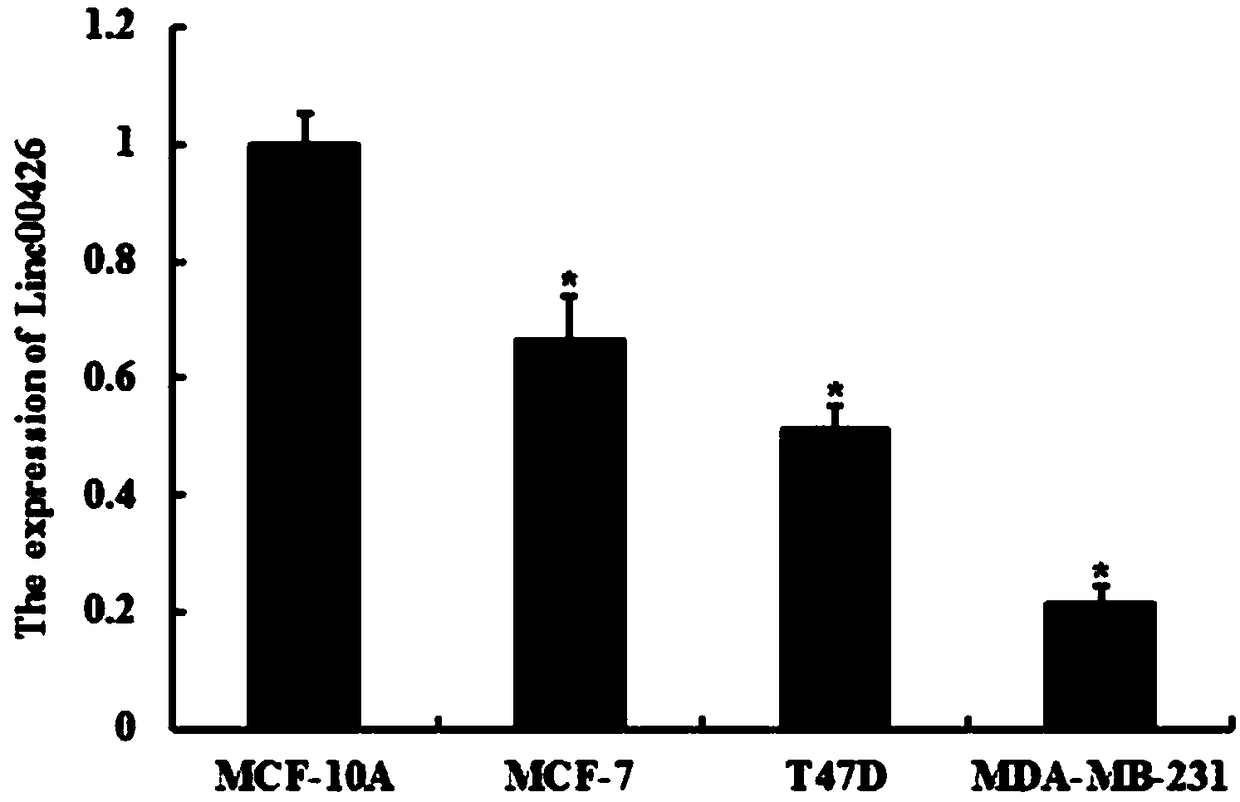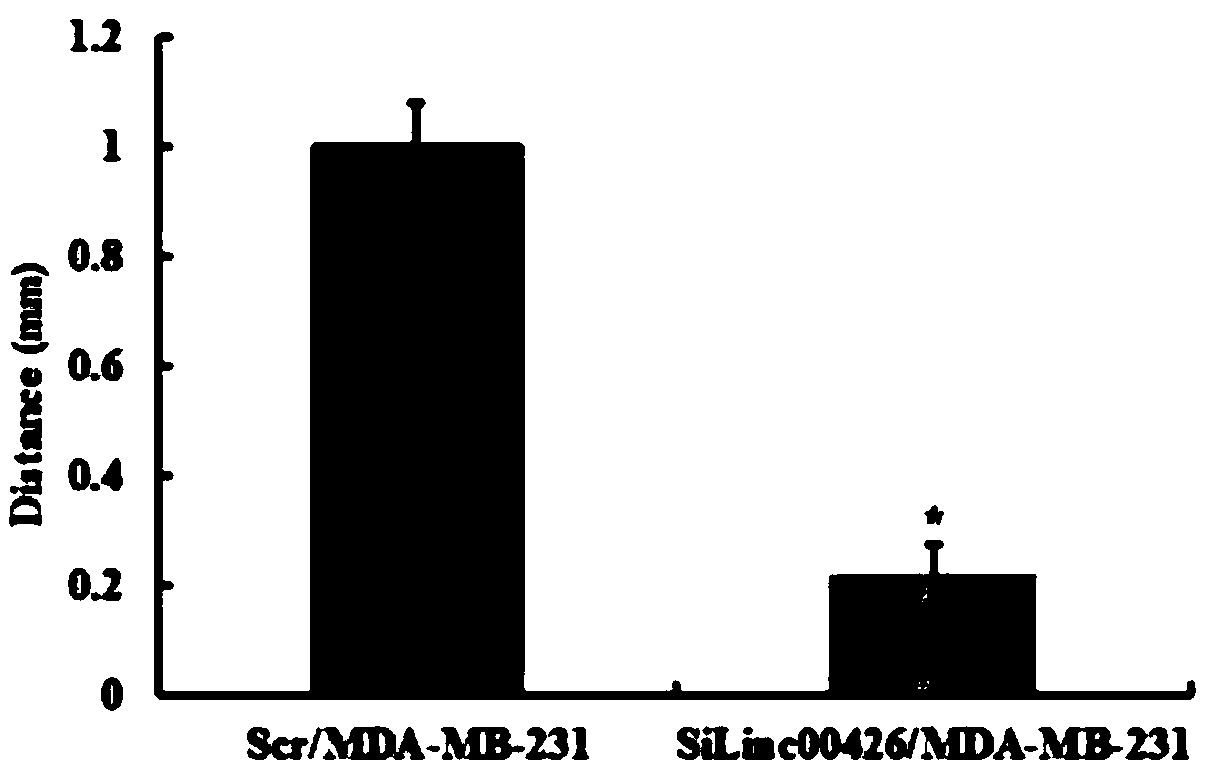Application of long non-coding ribonucleic acid (lncRNA) in diagnosis and/or treatment of breast cancer
A technique for breast cancer, uses, applied in the field of molecular biology
- Summary
- Abstract
- Description
- Claims
- Application Information
AI Technical Summary
Problems solved by technology
Method used
Image
Examples
Embodiment 1
[0034] 1. Use Invitrogen's TRIzol to extract the total RNA in the cells.
[0035] 1.1 Aspirate the culture medium of normal breast epithelial cells MCF-10A or breast cancer cells MDA-MB-231, T47D, MCF-7 cells in the 6-well plate, add 1ml TRIzol to each well to make it cover the cells, then use a pipette or add The sample was pipetted 3 times, the cells should be completely lysed, and then transferred to a centrifuge tube.
[0036] 1.2 Add 0.2 mL of chloroform (0.2 mL of chloroform to 1 mL of TRIzol) into the centrifuge tube containing the lysate, shake and mix well on the shaker for 20 seconds, and place at room temperature for 5 minutes. Centrifuge at 12,000g at 4°C for 10 minutes, then pipette the upper aqueous phase containing total RNA into a new centrifuge tube. About 0.6mL of the upper aqueous phase can be absorbed per milliliter of TRIzol. The organic phase and interlayer contain DNA and proteins and should be avoided.
[0037] 1.3 Add isopropanol equal in volume to t...
Embodiment 2
[0050] Breast cancer cell MDA-MB-231 was infected with shRNA lentivirus, and Linc00426 in the cells was successfully knocked out, and a stable cell line was screened out. MDA-MB-231 cells infected with RNAi lentivirus were called SiLinc00426 / MDA-MB-231 , MDA-MB-231 cells infected with a control lentivirus called Scr / MDA-MB-231.
[0051] The Linc00426 shRNA lentivirus was customized by Shanghai Jikai Gene Company, and the carrier name is GV248. The sequence is: 5'-AAGGATGGAAATACAGAACAA-3', as shown in SEQ ID NO.4.
Embodiment 3
[0053] Wound healing assay to detect the migration ability of cells before and after infection: spread SiLinc00426 / MDA-MB-231 cells and Scr / MDA-MB-231 cells in a 35mm culture dish, after two days of growth, remove the conventional culture medium and replace it with 1 % fetal bovine serum culture medium. Use a 10 μL pipette tip to draw a uniform scratch on the bottom of the petri dish, and randomly select three fixed positions under an optical microscope to record the width of the scratch. The change of cell migration ability was judged according to the change of scratch width. The experiment was repeated three times, and the area of the cell scratch was counted by ImageJ.
[0054] Experimental results such as image 3 As shown, knocking out Linc00426 can significantly inhibit the migration ability of breast cancer MDA-MB-231 cells.
PUM
 Login to View More
Login to View More Abstract
Description
Claims
Application Information
 Login to View More
Login to View More - R&D Engineer
- R&D Manager
- IP Professional
- Industry Leading Data Capabilities
- Powerful AI technology
- Patent DNA Extraction
Browse by: Latest US Patents, China's latest patents, Technical Efficacy Thesaurus, Application Domain, Technology Topic, Popular Technical Reports.
© 2024 PatSnap. All rights reserved.Legal|Privacy policy|Modern Slavery Act Transparency Statement|Sitemap|About US| Contact US: help@patsnap.com










